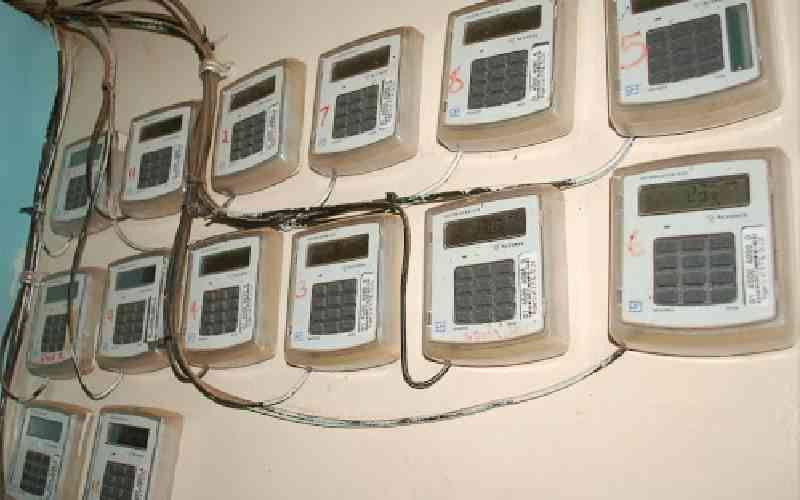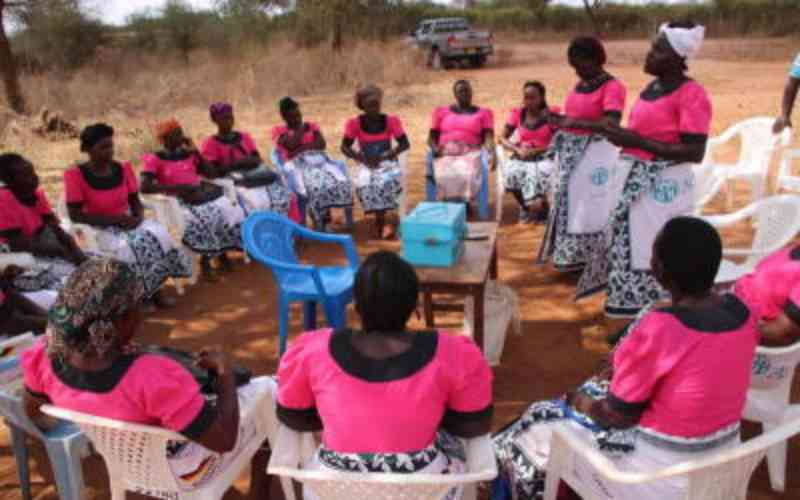
A number of flawed purchase contracts between government and Independent Power Producers (IPPs) has left Kenyans paying billions of shillings for electricity they are not consuming, preventing the cost of power from going down.
Electricity consumers are still being forced to pay 25 private thermal electricity producers despite heavy investments that have increased the country’s power production capacity. The country currently has a generation capacity of 2,303 Megawatts (MW) but its peak demand is 1,640 MW. Thermal power producers who use diesel only contribute 522MW, which means without their input, other energy sources can produce 1,781MW, which is more than the country’s demand.
Steam generated geothermal overtook hydro-electric generation early in the year to become the highest contributor to Kenya’s power at 44 per cent. Water generated hydro now contributes 26.1 per cent while diesel-powered plants and wind contribute 21 and one per cent respectively; electricity imported from Uganda contributes four per cent.
An order issued by President Uhuru Kenyatta in July last year to end contracts with some of these IPPs for engaging in what he called cartel-like behaviour is yet to be effected. “I believe there has been a lot of cloud around signing agreements with IPPs that has cost the country heavily,” said Uhuru at the time.
ERC says it is working to extricate itself from these contracts. It is emerging that the cost of getting out of these contracts is one of the reasons why this order by the President is proving difficult to execute.
Dynamic demand
The earliest such contracts for thermal electricity will expire is 2023 when Tsavo Power’s 23-year-old and Rabai Power’s 15-year-old agreement lapses. Gulf and Triumph Powers contracts will follow in 2031 while Triumph, which is the latest entrant, will work under the current arrangement until 2032. Ibera Africa’s contract also expires in 2032.
“A task force was gazetted by the Ministry of Energy and Petroleum through a gazette notice of 31st January 2017 which is working on this matter,” Robert Oimeke, the Acting Director General, told The Standard on Sunday.
Diesel-fired electricity is three time more expensive than geothermal (Sh7 per unit) and seven times costlier than hydro-power (Sh3). The IPPs are paid a fixed charge through a ‘Take or Pay’ tariff arrangement whether they generate power or not.
Nevertheless ERC says it will be impossible for the country to wean itself from the contracts it has made with the IPPs in the short term as these firms are still needed.
“It is important to note that we require a dynamic system that is able to respond to our dynamic demand needs while at the same time achieve sustainability in our tariffs and energy security,” Robert Oimeke, the commission’s acting director general, said.
He explained: “Thermal IPPs dispatch will decline as we increase power generation from other technologies such as geothermal, wind, solar, biomass and hydro-power; but they will continue to be used as peaking plants and where necessary provide voltage support in the system.”
According to Kenya Power’s financial records, last year Kenyans paid Sh13.8 billion to seven thermal producers, up from Sh11.2 billion in 2015. Meanwhile, Kengen, which produces at least 70 per cent of the country’s electricity, received Sh35 billion.
Ibera Afrika earned Sh3.1 billion, Tsavo Power (Sh2.1 billion), Thika Power (Sh2 billion), Rabai Power (Sh2.8 billion), Triumph Power (Sh2 billion), Gulf Power (Sh1.86 billion) while Aggreko took home Sh542 million.
A further scrutiny of the data however raises question as to why five of these companies earned more money when compared to the previous year while they injected less power to the grid.
Stay informed. Subscribe to our newsletter
Ibera Afrika for instance, which earned 3.1 billion in 2016, injected 128GWh during that year while it earned Sh2.8 billion in 2015 for injecting 198GWh. Similarly Tsavo Power, which earned Sh2.1 billion for 39GWh in 2016, received Sh1.98 billion in 2015 for 83GWh.
The cost of purchasing power from these thermal producers is transferred to a customer’s bill as fuel cost charge. It is a major contributor to the amount the customer will pay as it is also tied to the strength of the shilling as Kenya is an oil importer. The shilling has tumbled to an eight-year low of Sh103 to the dollar.
An electricity bill comprises 10 different units. In a response to a query by The Standard on Sunday, Kenya Power says that for every Sh1,000 paid this month by a domestic consumer, Sh150 is a fixed charge, Sh196 is the fuel cost charge (FCC), Sh113 (forex adjustment cost), Sh24 (inflation adjustment cost) while Sh2 is the ERC levy.
Purchase agreements
Additional costs include Sh18 as rural electrification authority (ERC) levy, Sh1 (water resource management authority levy) and a Sh136 tax, leaving only Sh367 which is the actual cost for the units purchased (69 units).
“Inflation adjustment charge changes half yearly while the fuel cost charge and the forex adjustment charge are adjustable every month, depending on the prevailing oil prices and foreign exchange rates,” said Kenya Power. The Kenya Association of Manufacturers said this high cost of electricity is prohibitive to the industry.
“Our industries are paying higher tariffs compared to neighbouring countries, making locally produced goods uncompetitive,” Flora Mutahi, the association’s chairperson said.
When it came to power in 2013, the Jubilee administration promised to inject an additional 5000MW by 2017 through the Least Cost Power Development Plan. In the last three years alone, some 675MW of additional power generation capacity has been added to the grid. These include: Kindaruma 3rd Unit (32MW), two geothermal units (25MW), Olkaria IV (140MW), Olkaria I Units 4 & 5 (70 of 140MW commissioned), and OrPower4 (16MW).
However, despite the heavy investments in geothermal power, it has been on a signing spree with independent power producers entering into purchase agreements with nine of them in recent years.
Kenya Power says this is necessary in order to create a contingency.
“Adequate reserve capacity in the system is necessary to back up hydro-power, which is vulnerable to fluctuations in weather conditions like is the case currently,” it says.
“We also need to provide room for growth in demand as generation projects require time and intensive resources to implement whereas demand continues to grow as we connect new customers.”
 The Standard Group Plc is a
multi-media organization with investments in media platforms spanning newspaper
print operations, television, radio broadcasting, digital and online services. The
Standard Group is recognized as a leading multi-media house in Kenya with a key
influence in matters of national and international interest.
The Standard Group Plc is a
multi-media organization with investments in media platforms spanning newspaper
print operations, television, radio broadcasting, digital and online services. The
Standard Group is recognized as a leading multi-media house in Kenya with a key
influence in matters of national and international interest.
 The Standard Group Plc is a
multi-media organization with investments in media platforms spanning newspaper
print operations, television, radio broadcasting, digital and online services. The
Standard Group is recognized as a leading multi-media house in Kenya with a key
influence in matters of national and international interest.
The Standard Group Plc is a
multi-media organization with investments in media platforms spanning newspaper
print operations, television, radio broadcasting, digital and online services. The
Standard Group is recognized as a leading multi-media house in Kenya with a key
influence in matters of national and international interest.









